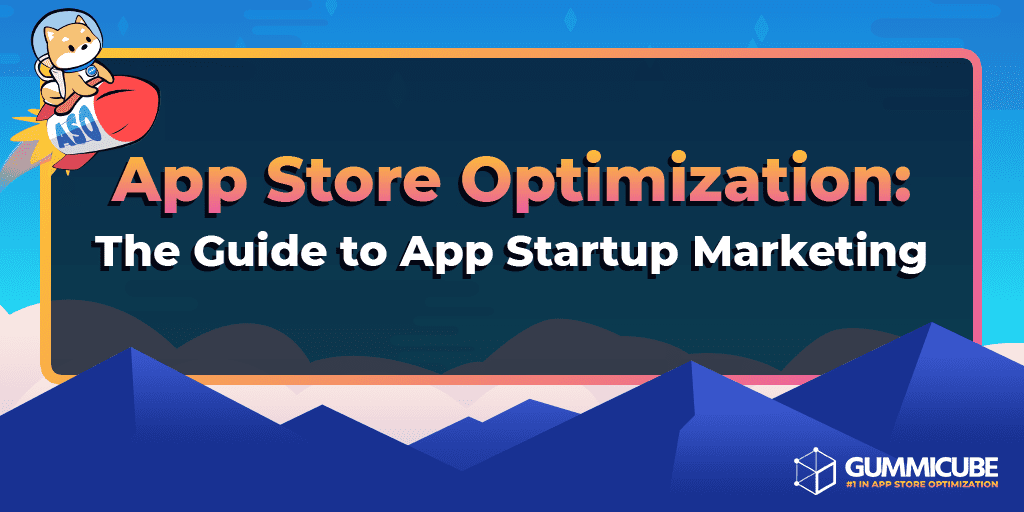
Table of content
- Optimizing for Organic Search Traffic
- Conversions, Testing and Iteration
- Paid Marketing
- Overall
The app ecosystem is a competitive environment – how can new app and mobile game startups succeed? Simply placing an app on the App Store and Google Play Store then waiting for people to find it isn’t enough. If you want your startup’s app to succeed, you need to take every effort to ensure your app is visible and reaching the users that matter. For that, you need App Store Optimization (ASO).
You may be wondering: What is ASO, and how can a startup utilize it? App Store Optimization consists of the techniques and best practices used to help apps appear high up in searches on the app stores for relevant keywords and gain downloads. Good optimization can make the difference between growth and obscurity for startup apps.
Optimizing for Organic Search Traffic
Startups do not have the luxury of relying on their brand names. It takes time and effort to establish a brand, whereas competitors may already be well-established. This means you need to optimize to capitalize on the features of your app, and the best way to do that is by fully utilizing the potential of search traffic.
How Search Optimization Works
Even if you don’t have an established brand, you can still get discovered and gain downloads on the App Store and Play Store. Startups can target relevant terms tied to their features and audience to appear in search queries that don’t involve specific brand names. By optimizing your app for organic search traffic, you can improve your visibility in the channel where 70% of app discovery occurs. By targeting vital keywords in your metadata, you can build relevance and increase your search ranking for terms users are searching for. You can also target competing brands in order to appear in searches for apps that are similar to yours. The best part is: the growth continues to generate as your optimization takes effect. Optimizing for search traffic will provide you with more impressions, which can lead to more clicks and downloads. This can, in turn, bolster your organic rankings, making your visibility improve even further.
Example:
Deploying metadata updates can have a significant impact on how rankings for an app grow. We can see that in play by looking at the growth one startup’s app achieved after launching optimized metadata.
As a startup that had not yet optimized its search traffic, the first step was identifying what keywords were important to target. Since the app was designed for plant identification, these included phrases relating to “identification,” “recognition,” various kinds of plants and competitors in the same field. After launching the metadata updates, the app gained search rankings for a number of valuable, relevant keywords.
Over the course of the optimization and multiple iterations to further cement its keywords, the startup’s app ranked in the top 5 for 90% more keywords. This increased its search visibility by 44%, which in turn boosted its organic search impressions by 642%. As a result, it nearly tripled the average installs it gained through search. This stands as a strong example of how much a startup company’s app can grow and establish a name for itself with the proper optimization.
Conversions, Testing and Iteration
After search optimization helps users find your app, the next step is for them to download it. While established companies have a recognizable look, startups need to determine and establish their branding.
This is where conversion optimization begins. By applying best practices to optimize creatives (the icon, video and screenshots for an app), startups can improve the likelihood of a user installing their app.
You can also drive conversions by designing your creatives based on your most popular terms. What keywords are users finding your app for, and what features does your app have that relate to them? If you can integrate those keywords and features into your creative set, it will appeal more to users searching for those terms. A startup can find new users interested in exactly what they have to offer if they have the right combination of keywords and creatives.
A/B Testing
Once you’ve designed new creative sets, how can you be sure they’ll work? A/B Testing can help determine which creative aspects and variants perform the best. This is particularly beneficial for startups, which may be less restrained by branding guidelines and more free to test aspects like color schemes and messaging.
You can use A/B testing to run different variants against each other to a split audience and determine effectiveness based on which gains the most or downloads. These tests will help you determine variables like which background color performs best, which screenshot copy gets the most attention or what icon users respond to best.
From there, you can continue to build upon the success of previous versions. Take the aspects that performed best and iterate from there.
Iterations
ASO is an iterative process – each new launch should improve from the last using new information you’ve learned. With every build you can improve your overall performance.
As a startup, it’s essential that you learn what works best for your app and brand. While it may seem easy to copy what larger competitors are doing, that is not a guaranteed success. Your competition may be running their own tests or are relying on their brand name.
You need to identify what works best for your app. If you only copy what your competitors are doing, you’ll provide users with no reason to choose your app over established brands.
Paid Marketing
It can be difficult to gain visibility in the app stores. New competitors emerge every day, so even the best developers need any edge they can get.
Utilizing paid campaigns can help your app gain traffic and reach users. This is especially important for new apps, since they will generally have very little traffic in the beginning.
Paid campaigns like Apple Search Ads can feed traffic to your store listing by placing it at the top of search results, directly in front of users. This can help improve your visibility and gain more clicks, which in turn will improve your organic rankings. In fact, every download gained from paid campaigns will also contribute to one download from organic search.
Not only can paid campaigns make your traffic more efficient, they can also put you in a better position than your competitors that aren’t utilizing it. As startups and other new apps will not rank for many terms at first, they’ll have a low volume of traffic. Paid marketing can help boost this by bringing additional users to the app, which will help overall growth.
Overall
It can be difficult for startup apps to establish themselves on the App Store and Google Play Store. It’s a competitive environment and newer names have an uphill battle to get noticed. This is why App Store Optimization is so key for startups – optimizing can help apps reach users and establish a footprint in the stores. A/B testing is particularly important, as it can help app startups establish their brand while gaining important insights into what creatives and messaging draw users and downloads. Learning this early on can help the app establish its branding as it grows.
If you can target keywords to gain organic traffic, test and optimize creative elements to gain installs and bolster your efforts with paid marketing, you’ll be in a better position to compete. Without App Store Optimization, you’ll have difficulty even getting on the playing field.
About the Author:
Gummicube Co-Founder & CEO, Dave Bell:
Gummicube is a global leader in App Store Optimization with more than 11 years of experience optimizing and marketing apps. We offer the leading enterprise ASO technology and agency services, providing support to clients around the world. Our company is trusted by thousands of enterprise brands and leading startups including Microsoft, LinkedIn, Bethesda, SWEAT, GrubHub, McAfee and many others.
With over three years of experience as a social media manager and language specialist at TeaCode, Gabriela has rocked multiple roles in the dynamic world of software marketing. As a cognitive linguist, she brings a unique blend of expertise that links language, the human mind, and technology. Her background, coupled with experience in translations and content localization, helps her connect people, content, and various work areas.
Gabriela’s ability to weave together the threads of different industries is impressive. Drawing insights from software, marketing, recruitment, fire safety, animations, and project management, she offers a fresh and organized approach to every project.
Follow her articles for insights into the ever-changing world of language, technology, and software, as she simplifies highly technical aspects of our company.
